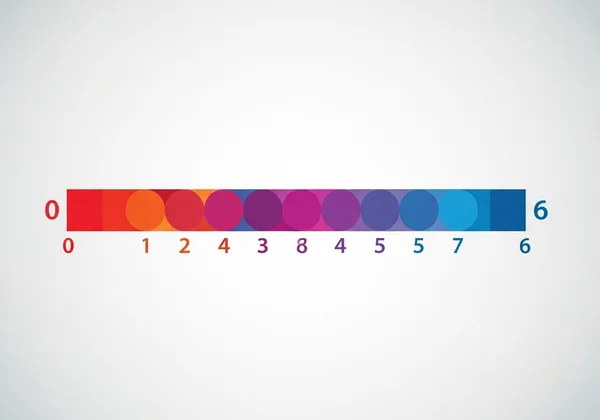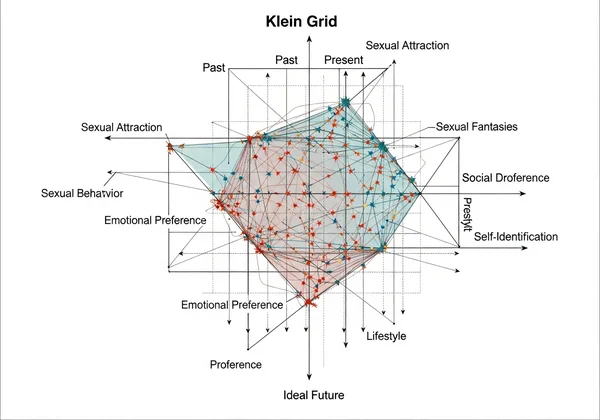Kinsey Scale vs. Klein Grid: Which Model Fits You?
Ever felt a pull to understand yourself better, especially when it comes to your sexual orientation? It's a natural and powerful part of who we are, and exploring it can be truly transformative. If you're here, you're likely seeking tools to help chart your own path. You’ve probably heard of the famous Kinsey Scale vs. Klein Grid, but which model fits you?
Understanding these frameworks is a powerful step toward self-awareness. While the Kinsey Scale offers a foundational snapshot, the Klein Grid provides a more detailed, evolving picture. This article will break down both models, helping you decide which tool is the right starting point for your personal exploration. If you're ready to begin, you can always start your exploration with an insightful and private test.
What is the Kinsey Scale? The Foundational Spectrum
The kinsey scale of sexuality is arguably the most well-known model for understanding sexual orientation. Developed by Alfred Kinsey and his colleagues at the Kinsey Institute in the mid-20th century, it was revolutionary for its time. It challenged the rigid, binary view of sexuality and introduced the idea that orientation exists on a continuum. It’s a simple yet powerful tool for an initial reflection on your feelings and experiences.
The scale's primary goal is to provide a straightforward framework. It doesn't aim to capture every nuance of your identity, but rather to offer a clear, accessible point of reference on your self-discovery journey.

Understanding the 0-6 Spectrum of Sexuality
At its heart, the Kinsey Scale is a seven-point rating system. The 0-6 spectrum ranges from exclusively heterosexual (0) to exclusively homosexual (6). The numbers in between represent varying degrees of attraction or experience with more than one gender. For instance, a score of 3 is often interpreted as being equally heterosexual and homosexual.
There is also an "X" category. This is designated for individuals who report no socio-sexual contacts or reactions. It’s an important inclusion that acknowledges asexuality or a current lack of sexual experience, ensuring the scale is more inclusive than a simple binary.
Its Core Focus: Behavior and Attraction
The Kinsey Scale primarily assesses two key dimensions: overt sexual behavior and psychological reactions, or sexual attraction. The questions in a Kinsey Scale quiz typically ask about your history of sexual contact and your patterns of attraction and fantasy. This focus provides a concrete "snapshot" of your orientation at a given point in time.
This approach is direct and easy to understand. It grounds the abstract concept of orientation in tangible experiences and feelings, making it a less intimidating first step for those just beginning their exploration. Finding your kinsey scale score can offer a truly validating and insightful moment, helping you understand yourself better.
The Power of Simplicity: A Starting Point for Exploration
Some critics argue the Kinsey Scale is too simple for the modern understanding of sexuality. However, its simplicity is also its greatest strength. It provides a clear, digestible result that serves as an excellent starting point. It's the ideal first step for anyone just beginning to explore, offering a clear answer without the overwhelm of too much complexity.
Think of it as the "You Are Here" marker on a large map. It gives you a location from which you can begin to explore the wider territory. For many, taking an interactive online test is the first empowering step toward deeper self-knowledge.
Klein Grid Explained: A Deeper, Multi-Faceted View
Think of the Kinsey Scale as a quick snapshot of your orientation, while the Klein Grid explained is more like a detailed, evolving film of your sexual identity over time. Developed by Dr. Fritz Klein in the 1970s, it was designed to expand upon Kinsey's work. Klein recognized that sexuality is multi-dimensional and can change over time. His model offers a much more nuanced and dynamic understanding of an individual's orientation.
The Klein Sexual Orientation Grid (KSOG) doesn't give you a single score. Instead, it creates a detailed profile, acknowledging that different aspects of our lives can reflect different patterns of attraction and identity.

The Seven Variables Beyond Behavior
The grid moves beyond just behavior and attraction by assessing seven variables. This provides a more holistic view of your orientation. The variables are:
- Sexual Attraction: Who are you romantically or erotically drawn to?
- Sexual Behavior: Who have you had sexual contact with?
- Sexual Fantasies: Who do you fantasize about?
- Emotional Preference: Who do you feel most emotionally connected to?
- Social Preference: With which gender(s) do you prefer to socialize?
- Lifestyle: In which community do you spend your time and feel most comfortable?
- Self-Identification: How do you label your own identity?
This breakdown acknowledges that a person might have sexual behavior with one gender but form their deepest emotional bonds with another, a nuance the Kinsey Scale doesn't capture.
Introducing the Dimension of Time: Past, Present, and Ideal
The most innovative feature of the Klein Grid is its inclusion of time. For each of the seven variables, you rate yourself at three different points: the past, the present, and your ideal future. This concept, supported by modern research from organizations like the American Psychological Association, powerfully demonstrates that sexuality is fluid.
Your emotional preferences may have changed since your teenage years, and your ideal future might look different from your present reality. This temporal dimension turns a static label into a dynamic personal story, offering a rich tapestry of your evolving identity.
Head-to-Head: Kinsey Scale vs. Klein Grid
When comparing these two foundational sexual orientation models, it’s not about which one is "better." It's about which one better serves your current needs. Are you looking for a clear starting point or a deep, analytical dive?
Both models were created to foster understanding and move beyond simplistic labels. They offer different levels of detail for different stages of the self-discovery process. Deciding between them depends entirely on what questions you are asking yourself right now.

Simplicity vs. Nuance: Choosing Your Level of Detail
The core difference is simplicity versus nuance. The Kinsey Scale provides a single number, a clear and concise placement on a spectrum. It’s easy to interpret and can be incredibly affirming for someone seeking clarity.
The Klein Grid, in contrast, offers 21 different data points (7 variables x 3 points in time). This creates a highly detailed, nuanced profile that can be fantastic for deep introspection or academic study but might feel overwhelming for a first-time explorer.
Static Snapshot vs. Dynamic Story
The Kinsey Scale gives you a snapshot of who you are right now, based on your attractions and behaviors. The Klein Grid tells a story of who you have been, who you are, and who you aspire to be. It validates the idea that identity can evolve, which can be incredibly liberating.
Which is more useful? If you're trying to make sense of your current feelings, the Kinsey snapshot is perfect. If you're trying to understand your life's journey and the evolution of your identity, the Klein Grid's dynamic story is more appropriate.
Which is Best for You? A Practical Guide
Here’s a simple guide:
- Choose the Kinsey Scale if: You are new to exploring your sexuality, you want a clear and easy-to-understand result, or you need a solid starting point for self-reflection. It’s the perfect first step.
- Choose the Klein Grid if: You have already done some self-reflection, you feel your identity is complex and multi-faceted, or you want to explore how your orientation has changed over time.
For most people on this journey, the most logical path is to start with the foundational tool. You can take the first step today with a simple, private test.
Your Journey, Your Tools: Start Your Exploration Here
Ultimately, both the Kinsey Scale and the Klein Grid are just tools. They are maps, not destinations. Your identity is uniquely yours, and it cannot be fully captured by any score or grid. These models are here to offer language, perspective, and validation as you navigate your personal journey.
The best way to start is by taking that first, simple step. The Kinsey Scale provides an accessible, insightful, and private way to get a baseline understanding of where you are right now. It can open the door to deeper questions and a more profound sense of self.

Curious to see where you might be on this insightful spectrum? Start your confidential quiz today. It's a quick, private way to begin a beautiful journey of self-discovery.
Frequently Asked Questions About Sexual Orientation Models
Is the Kinsey Scale still relevant today?
Absolutely. While contemporary discussions on sexuality have expanded to include more identities, the Kinsey Scale remains highly relevant as a foundational educational and self-exploratory tool. Its introduction of sexuality as a spectrum was a monumental shift that paved the way for more nuanced models. For individuals beginning their journey, it provides a crucial, easy-to-understand framework before diving into more complex theories.
What are other alternatives to the Kinsey Scale?
Besides the Klein Grid, there are other alternatives to the Kinsey Scale. The Storms Sexuality Axis, for example, plots hetero-eroticism and homo-eroticism on separate X and Y axes, better representing asexuality and bisexuality. However, for accessibility and as a starting point, the Kinsey Scale remains unparalleled. Our platform offers a user-friendly and private Kinsey Scale quiz to help you begin this exploration.
Can my position on these scales change over time?
Yes, and that’s completely normal. One of the most important modern understandings is that sexuality can be fluid. The Klein Grid explicitly incorporates this with its past, present, and ideal timeframes. Even on the Kinsey Scale, a score you get today might differ from one you'd get five years from now. These tests are not meant to give you a permanent label, but rather to be a mirror for self-reflection at a specific moment in your life. You can always discover your results again as you continue to grow and evolve.